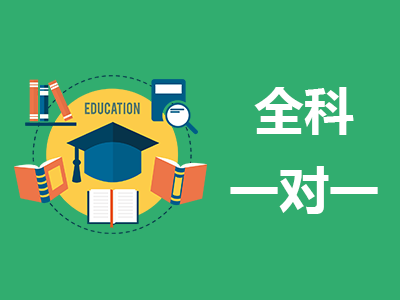2018年招收攻读硕士学位研究生入学考试试题(A卷)
********************************************************************************************
学科、专业名称:日语语言文学
研究方向:
考试科目名称:241基础英语
|
考生注意:所有答案必须写在答题纸(卷)上,写在本试题上一律不给分。 |
|
Part I Cloze (10 points) Directions: There are 20 blanks in the following passage. For each blank there are four choices marked A, B, C and D. You should choose the ONE that best fits into the passage. Then mark the corresponding letter on the Answer Sheet with a single line through the center. Globalization has affected almost every aspect of life in almost every nation. From economic to social to culture, this widespread __1__ of goods, services and ideas has __2__ changes around the world. Even though the__3__ influence in globalization is of slight significance to policy makers, its__4__ has tremendous consequences to the nations__5__ and its people. Food is an important element in __6__ culture. Britannica: “Food is the oldest global__7__ of culture.” Any changes in the foods that we eat, in its preparation, the__8__ it is served and consumed __9__ the traditional beliefs of the people. 1. A. cause B. effect C. result D. exchange 2. A. devoted B. dropped C. influenced D. preferred 3. A. stiff B. rough C. cultural D. tough 4. A. purpose B. power C. progress D. proof 5. A. involved B. outweigh C. outsourced D. outcome 6. A. responding B. defining C. reversing D. recovering 7. A. carrier B. caution C. cost D. crowd 8. A. approach B. style C. way D. means 9. A. miss B. move C. diminish D measure 10. A. permission B. emissions C. transmission D. introduction 11. A. retained B. forgiven C. taken D. modeled 12. A. correcting B. corrupting C. relating D. resisting 13. A. beset B. submitted C. believed D. raised 14. A. that B. which C. when D. what 15. A. sticks B. guesses C. identifies D. states 16. A. social B. local C. liberal D. regular 17. A. around B. about C.in D. up 18. A. accessible B. rapid C. overseas D. complete 19. A. connection B. trials C. impacts D. efforts 20. A. bills B. menus C. methods D. manners Part II Reading Comprehension Section A (40 points) Directions: There are 4 passages in this section. Each passage is followed by some questions or unfinished statements. For each of them there are four choices marked A, B, C and D. You should decide on the best choice and write the corresponding letter on the Answer Sheet. Questions 21 to 25 are based on the following passage. For many of us, asking for help is a difficult concept. We may feel as if we are admitting a weakness that the world would not have known about, had we not asked for help. Ironically, it’s been my experience that people who are able to deliver well-positioned requests for help are seen as very strong individuals. When they demonstrate the humility to ask for help, they earn the respect of others. People who receive a heartfelt request for help are usually honored by the request. In turn, we are strengthened by the very help that is provided. One of my clients (we’ll call her Kira) recently made shift in how she was interacting with her boss. When asked to prepare presentations, she assumed that she was expected to go away, develop the content, deliver it at the required meeting and then wait for feedback from her boss. Her boss was highly regarded for the impact of his presentations, which Kira often felt that her presentations were lacking. When she took a hard look at how this approach was working for her, Kira recognized that she had not yet made use of her boss’s support. She could learn far more about creating attractive presentations by walking through a draft with her boss —focusing on the content plus her delivery— and obtaining feedback earlier in the process rather than at the back end. So she made the request for his support. The outcome? Her boss was delighted to coach Kira and was enthusiastic about the opportunity to put into use his own strength by teaching presentation skills more effectively to her. By taking the time to work together on preparation for a number of Kira’s key presentations, she benefited from her boss’s thought process and was able to distinguish the critical components to enhance her own presentations. Kira’s presentations now have punch! Some of us are uncomfortable asking for help because we believe that our request places burdens on the other person. Ironically, we may be missing an opportunity to show others how we value and respect them. People who know you and think well of you are often highly motivated to help. Furthermore, the more specific you can be about what you need from them, the easier it is for them to assist you. 21. Many people are unwilling to ask for help because they______. A) are confident of themselves B) do not trust other people C) are ashamed of doing so D) do not think it necessary 22. Which of the following may the author agree with? A) Asking for help means admitting weaknesses. B) Helping others is helping oneself. C) Well-positioned requests for help are welcomed. D) Weak people often need more help. 23. Kira’s requests for help______. A) turned out rewarding B) was turned down C) led to her promotion D) benefited her boss in return 24. “Kira’s presentations now have punch” means her presentations are______. A) forceful B) controversial C) well received D) highly motivating 25. The purpose of the passage is to ______. A) illustrate how to ask for help B) show the importance of mutual help C) call for attention to other’s requests D) encourage people to ask for help Questions 26 to 30 are based on the following passage. Cheating is nothing new. But today, educators and administrators are finding that instances of academic dishonesty on the part of students have become more frequent — and are less likely to be punished — than in the past. Cheating appears to have gained acceptance among good and poor students alike. Why is student cheating on the rise? No one really knows. Some blame the trend on a general loosening of moral values among today’s youth. Others have attributed increased cheating to the fact that today’s youth are far more pragmatic (实用主义的) than their more idealistic predecessors. Whereas in the late sixties and early seventies,students were filled with visions about changing the world,today’s students feel great pressure to conform and succeed. In interviews with students at high schools and colleges around the country, both young men and women said that cheating had become easy. Some suggested they did it out of spite for teachers they did not respect. Others looked at it as a game. Only if they were caught, some said, would they feel guilty. “People are competitive,” said a second-year college student named Anna, from Chicago. There’s an underlying fear. If you don’t do well, your life is going to be ruined. The pressure is not only form parents and friends but from oneself. To achieve. To succeed. It’s almost as though we have to outdo other people to achieve our own goals. Edward Wynne, a magazine editor, blames the rise in academic dishonesty on the schools. He claims that administrators and teachers have been too hesitant to take action. Dwight Huber, chairman of the English department at Amarillo, sees the matter differently, blaming the rise in cheating on the way students are evaluated. “I would cheat if I felt I was being cheated,” Mr. Huber said. He feels that as long as teachers gives short-answer tests rather than essay questions and rate students by the number of facts they can memorize rather than by how well they can put information together, students will try to beat the system. “The concept of cheating is based on the false assumption that the system is legitimate and there is something wrong with the individual who are doing it,” he said. “That’s too easy an answer. We’ve got to start looking at the system.” 26. Educators are finding that students who cheat_______. A) are not only those academically weak B) tend to be dishonest in later years C) are more likely to be punished than before D) have poor academic records 27. According to the passage, which of the following statements is true? A) Reform in the testing system will eliminate cheating. B) Punishment is an effective method to stop cheating. C) Students’ cheating has deep social roots. D) Students do not cheat on essay tests. 28. Which of the following points of view would Mr. Huber agree with? A) Cheating would be reduced through an educational reform. B) Students who cheat should be expelled from school. C) Punishment for cheaters should be severe in this country. D) Parents must take responsibility for the rise in cheating. 29. The expression “the individuals” (the last paragraph) refers to ________. A) school administrators B) students who cheat C) parents D) teachers 30. The passage mainly discusses_______. A) ways to eliminate academic dishonesty B) factors leading to academic dishonesty C) the decline of moral standards of today's youth D) people’s tolerance of students' cheating Questions 31 to 35 are based on the following passage. There is a great irony of 21st-century global health: While many hundreds of millions of people lack adequate food as a result of economic inequities, political corruption, or warfare, many hundreds of millions more are overweight to the point of increased risk for diet-related chronic diseases. Obesity is a worldwide phenomenon, affecting children as well as adults and forcing all but the poorest countries to divert scarce resources away from food security to take care of people with preventable heart disease and diabetes. To reverse the obesity epidemic, we must address the fundamental causes. Overweight comes from consuming more food energy than is expended in activity. The cause of this imbalance also is ironic: improved prosperity. People use extra income to eat more and be less physically active. Market economies encourage this. They make people with expendable income into consumers of aggressively marketed foods that are high in energy but low in nutritional value, and of cars, televisions set, and computers that promote sedentary behavior. Gaining weight is good business. Food is particularly big business because everyone eats. Moreover, food is so overproduced that many countries, especially the rich ones, consume far more than they need, another irony, than the United States, to take an extreme example. Most adults — of all ages, incomes, educational levels, and census categories — are overweight. The U. S. food supply provides 3800 kilocalories per person per day, nearly twice as much as required by many adults. Overabundant food forces companies to compete for sales through advertising, health claims, new products, larger portions, and campaigns directed toward children. Food marketing promotes weight gain. Indeed, it is difficult to think of any major industry that might benefit if people ate less food, certainly not the agriculture, food product, grocery, restaurant, diet or drug industries. All flourish when people eat more. And all employ armies of Lobbyists to discourage governments from doing anything to inhibit overeating. 31. The great irony of 21st century global public health refers to ________. A) the cause of obesity and its counteractive measures B) the insufficient and superfluous consumption of food C) the seas natural resource and the green of food source D) the consumption of food and the increased risk for diet-related diseases 32. To address the fundamental cause of the obesity epidemic, according to the passage, is ________. A) to improve political and economic management B) to cope with the energy imbalance issue C) to combat diet-related chronic diseases D) to increase investment in global health 33. As we can learn from the passage, the second irony refers to ________. A) affluence and obesity B) food energy and nutritional value C) food business and economic prosperity D) diseases of civilization and pathology of inactivity 34. As a result of the third irony, people ________. A) consume 3800 kilocalories on a daily basis B) complain about food overproduction C) have to raise their food expenses D) are driven towards weight gain 35. Which of the following can be excluded as we can understand based on the passage? A) The economic dimension. B) The political dimension. C) The humane dimension. D) The dietary dimension. Questions 36 to 40 are based on the following passage. Now let us look at how we read. When we read a printed text, our eyes move across a page in short and jerky movement. We recognize words usually when our eyes are still when they fixate. Each time they fixate, we see a group of words. This is known as the recognition span or the visual span. The length of time of which the eyes stop — the duration of the fixation —-varies considerably from person to person. It also varies within any one person according to his purpose in reading and his familiarity with the text. Furthermore, it can be affected by such factors as lighting and tiredness. Unfortunately, in the past, many reading improvement courses have concentrated too much on how our eyes move across the printed page. As a result of this misleading emphasis on the purely visual aspects of reading, numerous exercises have been devised to train the eyes to see more words at one fixation. For instance, in some exercises, words are flashed on to a screen for, say, a tenth or a twentieth of a second. One of the exercises has required students to fix their eyes on some central point, taking in the words on either side. Such word patterns are often constructed in the shape of rather steep pyramids so the reader takes in more and more words at each successive fixation. All these exercises are very clever, but it’s one thing to improve a person’s ability to see words and quite another thing to improve his ability to read a text efficiently. Reading requires the ability to understand the relationship between words. Consequently, for these reasons, many experts have now begun to question the usefulness of eye training, especially since any approach which trains a person to read isolated words and phrases would seem unlikely to help him in reading a continuous text. 36. The time of the recognition span can be affected by the following facts except ________. A) one’s familiarity with the text B) one’s purpose in reading C) the length of a group of words D) lighting and tiredness 37. The author may believe that reading _______. A) requires a reader to take in more words at each fixation B) requires a reader to see words more quickly C) demands an deeply-participating mind D) demands more mind than eyes 38. What does the author mean by saying “but it’s one thing to improve a person’s ability to see words and quite another thing to improve his ability to read a text efficiently” in the second paragraph? A) The ability to see words is not needed when an efficient reading is conducted. B) The reading exercises mentioned can’t help to improve both the ability to see and to comprehend words. C) The reading exercises mentioned can’t help to improve an efficient reading. D) The reading exercises mentioned has done a great job to improve one’s ability to see words. 39. Which of the following is NOT true? B) Many experts began to question the efficiency of eye training. C) The emphasis on the purely visual aspects is misleading. D) The eye training will help readers in reading a continuous text. 40. The tune of the author in writing this article is ________. A) critical B) neutral C) pessimistic D) optimistic Section B (20 points) Directions: Read the following passage carefully and then translate the underlined segments into Chinese. (41)For hundreds of millions of years, turtles have struggled out of the sea to lay their eggs on sandy beaches, long before there were nature documentaries to celebrate them, or GPS satellites and marine biologists to track them, or volunteers to hand-carry the hatchlings (幼龟) down to the water’s edge lest they become disoriented by headlights and crawl towards a motel parking lot instead. A formidable wall of bureaucracy has been erected to protect their prime nesting on the Atlantic coastlines. With all that attention paid to them, you’d think these creatures would at least have the gratitude not to go extinct. (42)But Nature is indifferent to human notions of fairness, and a report by the Fish and Wildlife Service showed a worrisome drop in the populations of several species of North Atlantic turtles, notably loggerheads(红海龟), which can grow to as much as 400 pounds. The South Florida nesting population, the largest, has declined by 50% in the last decade, according to Elizabeth Griffin, a marine biologist with the environmental group Oceana. (43)The figures prompted Oceana to petition the government to upgrade the level of protection for the North Atlantic loggerheads from “threatened” to “endangered”—meaning they are in danger of disappearing without additional help. Which raises the obvious question: what else do these turtles want from us, anyway? It turns out, according to Griffin, that while we have done a good job of protecting the turtles for the weeks they spend on land (as egg-laying females, as eggs and as hatchlings), we have neglected the years spend in the ocean. “The threat is from commercial fishing,” says Griffin. Trawlers (which drag large nets through the water and along the ocean floor) and long line fishers (which can deploy thousands of hooks on lines that can stretch for miles) take a heavy toll on turtles. (44) Of course, like every other environmental issue today, this is playing out against the background of global warming and human interference with natural ecosystems. The narrow strips of beach on which the turtles lay their eggs are being squeezed on one side by development and on the other by the threat of rising sea levels as the oceans warm. (45)Ultimately we must get a handle on those issues as well, or a creature that outlived the dinosaurs will meet its end at the hands of humans, leaving our descendants to wonder how creature so ugly could have won so much affection. Part III Writing Section A (10 points) Directions: Your school is going to host an annual seminar on Corporate Social Responsibilities. Write a letter of about 100 words to an American professor to invite him to give a keynote speech at the seminar.
Section B (20 points) Directions: Many people think that innovation is important for society as well as for individuals. Write an essay of 160 to 200 words about what you think is innovation and explain why innovation is important.
|



























